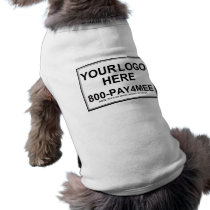You may be getting paid to design websites.
But if you’re doing any of these things, it’s time to stop calling yourself a ‘professional’.

Don’t know who created this, but I found it here.
In many ways I’m lucky: I’ve worked on website projects for more than 15 years now, and I’m married to a web developer who knows a lot about all kinds of different coding languages. So while I don’t design websites myself, it’s pretty tough for an unscrupulous web designer to pull a fast one on me and leave me with a hideous, broken, or grossly overpriced website.
Unfortunately, I’m feeling like I’m in a tiny minority. In the past couple of weeks I’ve come across a number of new clients – and businesses which can’t afford to be new clients, because they just spent their whole marketing budget on a disastrous website – who are in big trouble because they put their faith in someone who claimed to know what they were doing, but didn’t.
Thanks to tools like WordPress, designing and building (basic) websites is easier (and cheaper) than it’s ever been. That should be great news for clients, but instead it seems to have created a whole army of nincompoops who think that anyone who’s able to download a WordPress template and stick the client’s logo at the top is suddenly a ‘professional’ web designer.
It’s making the rest of us look bad, and I want you to stop.
7 ways to know that you should stop calling yourself a professional website designer
In case you’re not sure if you’re actually a ‘professional’ website designer or not, I offer these 7 criteria. If you’re doing any of these things, to any of your clients, just stop right now. Go find another career. In fact, I’m pretty sure you’re going to have to find another career sooner or later, because your clients aren’t as stupid as you think, and eventually they’ll wake up to your nonsense.
1. You play fast and loose with your client’s logo
If you can’t manage to use your client’s logo on a website without stretching it, changing the font on the tagline, or using it consistently across different website pages, you need to think about being an accountant or something, because your sense of aesthetics is insufficient for any career involving the word ‘design’. Your client’s logo is often the basis of their brand equity, and for small businesses it may be all they’ve got. Change it and at best you make them look unprofessional; at worst you’ve cost them real money.
2. You start using random colour schemes that have nothing to do with the client’s brand identity
I’ve written about this before: When you start injecting new colours all over the place, you dilute the client’s brand identity and set a pattern of inconsistency that can cause a whole lot of problems. Yes, it can be hard to create an engaging website if the client’s logo is monochromatic – but it’s up to you to identify that challenge and help the client develop an official colour palette. Adding random rainbow backgrounds is not the answer.
3. You use all kinds of different fonts…
…and then pretend not to know what the client means when they say their website “doesn’t seem to look cohesive, somehow”.
I got a call this week from a couple of women who were frustrated with the look of their new website but they didn’t know why and their website designer wasn’t returning their calls. The biggest problem? There were 4 different fonts on the homepage alone, none of which was the font actually used in their logo+tagline image. It’s one thing to use a serif for the headings and a sans-serif for the body copy, just to offer a little visual interest, but more than that and the whole thing starts to look like a random collage. And you should know better.
4. You grab random stock photos and then don’t bother to customize them in any way
Ah, stock photography and the internet. In many ways it’s great: These days, you don’t have to spend $10k on custom photography when you need shots of people on a beach or something. But stock photography almost always looks like stock photography: People can tell that that attractive, culturally diverse group of people gathered around a computer screen, with strong blue tones and a white background is something you found on iStock.
It makes the site look generic, and worse, makes people wonder if the content on the site is similarly generic. It’s fine to use stock photos – just make sure you make them your own.
5. You lie to your client because you assume they’re too stupid to know any better
The client is not stupid. In fact, the client may be a whole lot smarter than you are, and more than capable of creating their own website if they weren’t so busy conducting symphonies or finding a cure for malaria. So don’t lie to them just because you think anyone who doesn’t know the difference between html and a CSS must be an idiot. If you can’t bring yourself to refrain from lying simply on moral grounds, consider this: Sooner or later your client will figure out that you’re not being honest with them, and they’ll call someone like me instead.
6. You tell the client that something “isn’t possible” when the truth is you just don’t know how to do it
The bottom line is that when it comes to websites, almost anything is possible, given sufficient brainpower, time and budget. Sometimes you’re on a deadline; sometimes the client just doesn’t have the budget. But if you’re telling the client stuff like “WordPress doesn’t allow you to change the background colour” or “Flash and html don’t work on the same website” or “It doesn’t matter if the site doesn’t work in Firefox – no one uses that any more” simply because you don’t know how to solve the problem, you’re lying, and you need to stop it (see #5).
7. You refuse to give your client their files or passwords even after they’ve paid you for the work
Among real professionals, the industry standard is that once a client has paid you in full for your website design, they own it. That means they own the files, the access to those files, the images, the passwords – everything, unless you have a prior agreement in writing. Refusing to give them these things (or not bothering to get back to them when, a year from now, they need something from you) in order to keep them beholden to you is unethical – and could set you up for legal consequences.
And that’s what I have to say about that.






